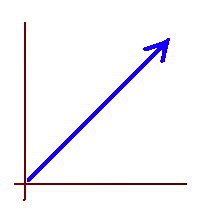One and Zero are always everywhere
The more you tutor math, the more skilled you become in finding good, clear ways to explain all types of math concepts to students. However, some concepts are more elusive than others. The difficulty of grasping a concept depends not only on the concept itself but also on the student who is assimilating it. One person, for example, can easily understand polynomial multiplication, and struggle with percentages, while someone else can find percentages very easy but have trouble with polynomials. There are also some concepts or topics that seem to be hard for a significant majority of students, like word problems for instance.
Substitution is a very powerful problem-solving technique, and it is widely used in a variety of situations. Students who find substitution easy have a clear advantage over students who have trouble understanding it. Substitution comes up in many different ways, some more complex than others. Some students understand the more basic forms of substitution but have problems applying the same techniques when dealing with more complex expressions. In fact, a very consistent general trend is the host of negative reactions students tend to show in varying degrees when facing bigger, longer, more complicated expressions. The more complex the expression, the more likely that students will get confused, or feel overwhelmed by it.
There is a particular way of using substitution to which most students react with a strong resistance: It involves transforming a given expression into another one that is equivalent in value but looks more complicated. This is done with the ultimate goal of simplifying the expression but it starts out by complicating it a little more. It is like climbing up a hill to find a way down the mountain.
The most common way of using this technique is by introducing a representation of the numbers Zero or One into the given expression.
Zero and One are very special numbers. They implicitly are everywhere in any given algebraic expression, even when we do not see them written out.
Zero is called the additive identity because zero plus any number is that same number ( x + 0 = x ).
One is called the multiplicative identity because one times any number equals that same number ( x∙1 = x ).
These two properties make Zero and One algebraically omnipresent in an implicit way.
Further, we have the following properties:
A number subtracted from itself equals zero ( x – x = 0 ).
A number different from zero, when divided by itself gives us one as the result ( x/x = 1 ).
These last two properties give Zero and One an infinite number of representations (“disguises” if you will) to show up in a formula. So, not only are Zero and One ubiquitous, they can come in a dizzying multiplicity of seemingly different forms.
The above properties of Zero and One, and their consequences, make them extremely useful in solving equations, and in manipulating algebraic expressions in general.
However, as I mentioned before, many students present a strong resistance to the idea of making an expression more complicated to be able to reduce it later. This is partly because they do not see the point of multiplying a number times one, or adding zero to it; partly because doing so seems to increase the problem in size and complexity; partly because they feel we are working backwards into some uncalled-for calculation, and finally because they believe they would not know what particular form of Zero or One they are supposed to introduce into the expression if they were doing the problem on their own.
Sometimes, when working with a student on a given problem, it is very easy for me to see a path to the solution using these types of techniques but I have learned to make sure the student does not feel like I was expecting him or her to be able to solve the problem in the same way. I only use these techniques when the student is completely stuck in the problem, not making any progress at all. When they see one possible solution, it gives them some perspective on the different factors playing a role in the problem. After showing them one possible solution method, if they do not feel comfortable that they would be able to successfully use the same method on their own, we focus on finding an alternate method that works better for them.
Golden iteration
-
The expression converges to the golden ratio φ. Another way to say this is
that the sequence defined by x0 = 1 and for n > 0 converges to φ. This post
wi...
1 day ago





No comments:
Post a Comment